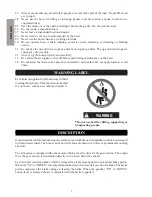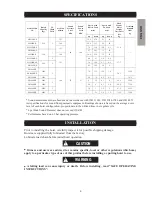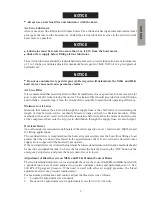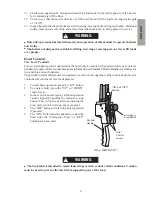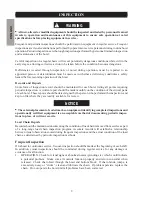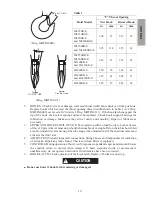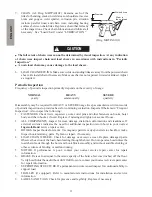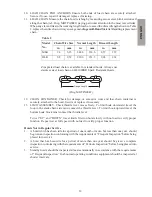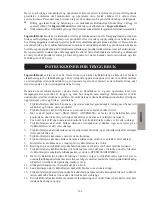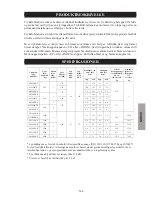
ENGLISH
23. Always ensure that you, and all other people, are clear of the path of the load. Do not lift a load
over people.
24. Never use the hoist for lifting or lowering people, and never allow anyone to stand on a
suspended load.
25. Ease the slack out of the chain and sling when starting a lift. Do not jerk the load.
26. Do not swing a suspended load.
27. Never leave a suspended load unattended.
28. Never weld or cut on a load suspended by the hoist.
29. Never use the hoist chain as a welding electrode.
30. Do not operate hoist if chain jumping, excessive noise, jamming, overloading, or binding
occurs.
31. Do not use the up and down stops as a means of stopping a hoist. The up and down stops are
emergency devices only.
32. Always rig the hoist properly and carefully.
33. Be certain the air supply is shut off before performing maintenance on the hoist.
34. Do not allow the chain to be exposed to extremely cold weather. Do not apply loads to a cold
chain.
WARNING LABEL
Each hoist is supplied from the factory with the
warning label shown. If the label is not attached
to your hoist, order a new label and install it.
WARNING
•
Do not use hoist for lifting, supporting or
transporting people.
DESCRIPTION
Hoists described in this manual are powered by air, and with the use of a pendant control, are designed
to lift and lower loads. The hoists can be bolted or hook mounted to a trolley or permanent mounting
structure.
The air hoists are equipped with vane motors which act as the drive for the gear section. The output
from the gear section is transmitted directly to the load chain drive sheave.
Each air hoist contains a brake which is released by air pressure applied to an annular brake piston.
When the “UP” or “DOWN” control pendant button/lever is pressed air is sent to the brake. The brake
piston compresses the brake springs, releasing the brake. When the pendant “UP” or “DOWN”
button/lever is released the air is exhausted and the brake is applied.
3




